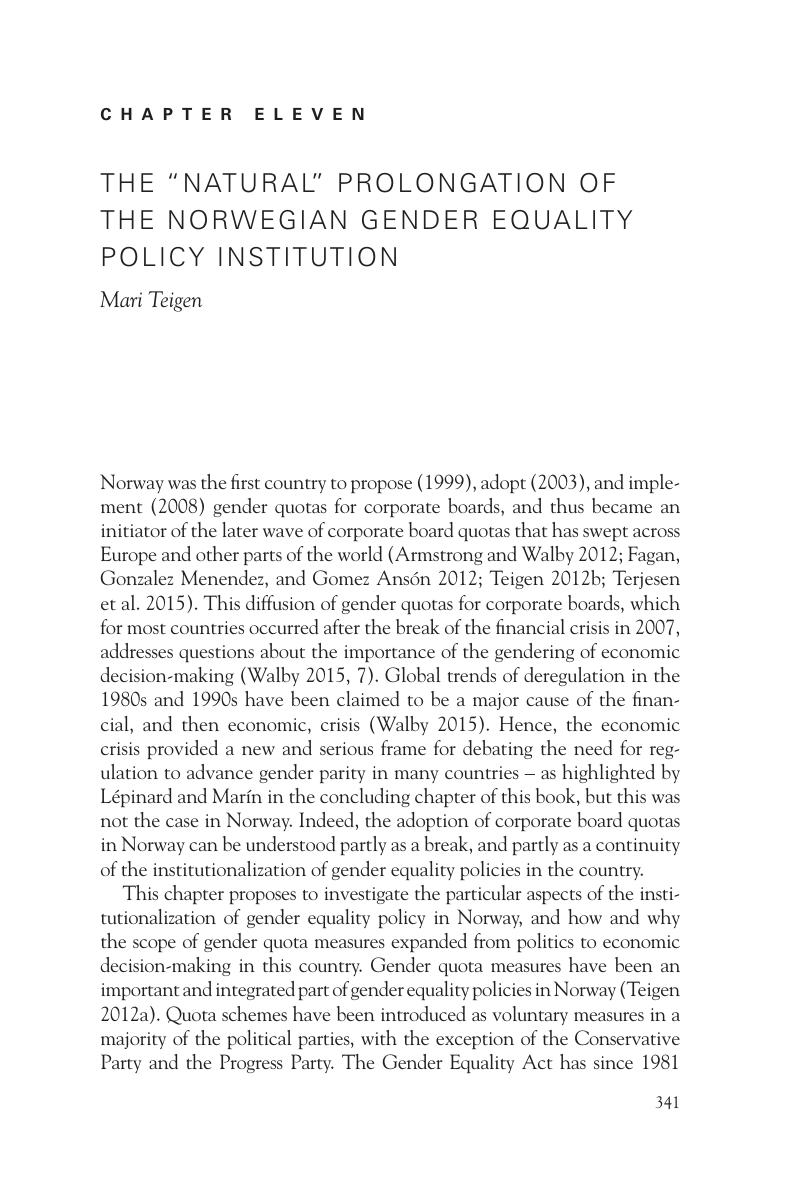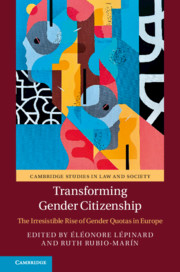Book contents
- Transforming Gender Citizenship
- Cambridge Studies in Law And Society
- Transforming Gender Citizenship
- Copyright page
- Contents
- Figures
- Tables
- Acknowledgments
- Introduction
- Part I Gender Quotas As Transformative Equality Remedies
- Part II Gender Quotas As Symbolic Equality Remedies
- Part III Gender Quotas as Corrective Equality Remedies
- Part IV Gender Quotas As Accessory Equality Measures
- Chapter Eleven The “Natural” Prolongation of the Norwegian Gender Equality Policy Institution
- Chapter Twelve Gender Equality without Legislated Quotas in Sweden
- Chapter Thirteen Gender Equality without Gender Quotas
- Conclusion
- Index
- Cambridge Studies in Law and Society
- References
Chapter Eleven - The “Natural” Prolongation of the Norwegian Gender Equality Policy Institution
from Part IV - Gender Quotas As Accessory Equality Measures
Published online by Cambridge University Press: 21 July 2018
- Transforming Gender Citizenship
- Cambridge Studies in Law And Society
- Transforming Gender Citizenship
- Copyright page
- Contents
- Figures
- Tables
- Acknowledgments
- Introduction
- Part I Gender Quotas As Transformative Equality Remedies
- Part II Gender Quotas As Symbolic Equality Remedies
- Part III Gender Quotas as Corrective Equality Remedies
- Part IV Gender Quotas As Accessory Equality Measures
- Chapter Eleven The “Natural” Prolongation of the Norwegian Gender Equality Policy Institution
- Chapter Twelve Gender Equality without Legislated Quotas in Sweden
- Chapter Thirteen Gender Equality without Gender Quotas
- Conclusion
- Index
- Cambridge Studies in Law and Society
- References
Summary

- Type
- Chapter
- Information
- Transforming Gender CitizenshipThe Irresistible Rise of Gender Quotas in Europe, pp. 341 - 365Publisher: Cambridge University PressPrint publication year: 2018
References
- 4
- Cited by



